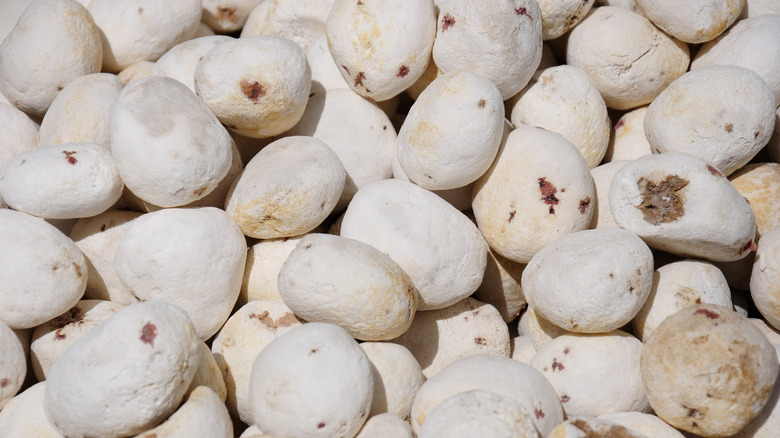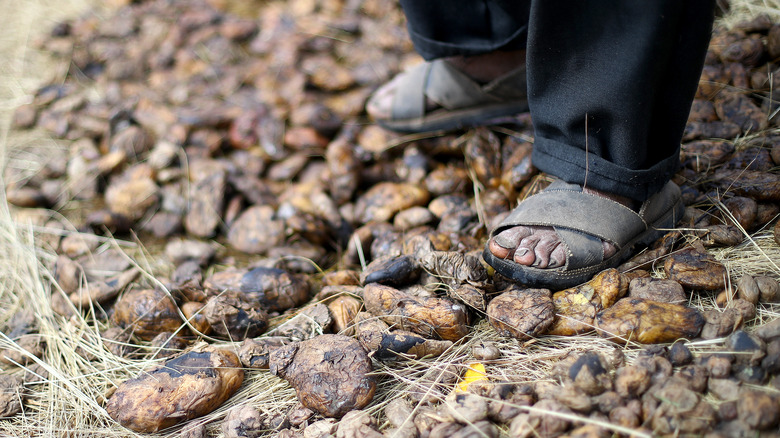Chuño: The Ancient South American Potato Staple You Should Know
When you think about potatoes, a couple of places come to mind, one obvious one being Idaho, the lead producer of potatoes in the United States. You might also think of Ireland, where potatoes form the base of multiple staple dishes like colcannon. But neither of these places can truly lay claim to the potato, as this root vegetable can trace its origins back some 8,000 years to the Andes mountains, according to BBC Travel. It might come as a surprise to learn that one of the earliest potato meals prepared in that mountain climate involved freeze-drying ... sort of.
Freeze-drying as we think of it today refers to a complex mechanized process. As HowStuffWorks explains, the freeze-drying process begins by freezing your food of choice as normal, a process that separates the water molecules from the rest of the food on a microscopic level. Once frozen, the food is placed in a vacuum chamber and has a small amount of heat applied to it. This thaws the water molecules, but they don't turn into liquid. Because the food is in a vacuum chamber, the water goes straight from solid to gas, a phenomenon called sublimation. With the water removed, the food can last for years on end without spoiling. The Institute of Food Technologists credits Jacques-Arsene d'Arsonval with inventing freeze-drying in 1906, but a rudimentary form of the practice goes back centuries.
Freeze-drying with nature
Chuño was a staple food of the Inca, and according to ZME Science, it was made through a natural process that achieved essentially the same results as modern freeze-drying technology. The Incan Empire, the largest civilization in pre-Columbian America, stretched across the Andes where the nighttime air can reach freezing cold temperatures. One might expect this harsh environment to pose an obstacle to the Inca's diet, but they found a way to make the elements work in their favor. Making chuño begins with spreading small potatoes in a single layer on the ground, sometimes by the thousand, according to France 24. The potatoes are left outside to freeze overnight. Then the fun begins.
The climate naturally takes care of the freezing portion of freeze-drying, but extracting the water takes a hands-on, or rather feet-on, effort. According to Atlas Obscura, once the potatoes begin to thaw in the sun, farmers stomp on them to squeeze out the remaining liquid. The freezing and stomping process is repeated over several days and nights until the potatoes are completely dried out. At that point, they can be stored for years on end since no bacteria or mold can survive in the potatoes without the presence of moisture. Britannica notes that chuños are still made today, but climate change has made the Andean nights warmer, and this centuries-old staple could eventually be lost to history.

